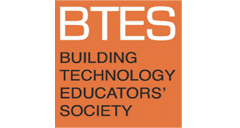The COTE Student Design Competition as a Vehicle for Integrative Architectural Education
Abstract
As the architectural profession becomes more complex, the education of a 21st-century architect requires integrative technological processes to prepare students to design more equitable, resilient, and environmentally responsive interventions. Interwoven design logics and innovative solutions are hallmarks of a holistic architectural design. The prompts that educators devise should encourage students to consider carbon emissions in response to our rapidly changing climate. The Committee on the Environment (COTE) Competition offers a vehicle for integrating these climate-critical issues. This paper will demonstrate how contemporary architectural curriculums can use the newly adapted AIA Framework for Design Excellence to frame larger discussions about the impact of architectural design on equity, ecosystems, water, economy, well-being, resources, adaptability, discovery, and integration. Using a collaborative and integrative approach by coupling a 6-credit graduate design studio with an adjacent 3-credit technology course, architectural ideation responds to the COTE Framework for Design Excellence through the design of a comprehensive building project. Using design methodologies and materialization strategies in relation to equity, and the environment, in the age of rapid climate change demands the need for resilient and innovative architectural solutions. While the COTE Top Ten could, and should, encompass good design at any size and scope, these coordinated studios sought to craft a specific relationship with indigenous cultures and ecologies of a specific place. Our experience shows that crafting finely tuned design prompts can offer an efficient and effective vehicle for entering the design problem with maximum effect. During the past two years, we have coordinated these studios with indigenous tribes to design cultural and environmental centers, allowing the graduate students to specify exact programmatic definitions for their interventions. Collaboration is an essential component of the architectural profession. As part of this complex and comprehensive studio with a laundry list of requirements, we have instigated teams for this studio project to allow students to hone their designs through constant negotiation with their partner(s) while allowing for increased output throughout the 16-week semester. This inherent complexity of the competition and a client's ‘real world’ constraints necessitates an architectural response beyond mere formal manipulations. While students are encouraged to submit their work to the final competition, the course is more than just the submission. By learning more about the past histories of the original inhabitants of the land we now occupy, students are confronted with how previous peoples utilized local resources and designed them in relation to distinct climates. Ultimately teaching the students the importance of design integration for an equitable and environmentally conscious future using the COTE competition has allowed a vehicle for cultural discussions to allow for a deeper understanding of place, people, and the power of the design profession for exacting change in our future world.
Keywords: Design Competition, Integrative Studio, Environmental Awareness
How to Cite:
Raab, P. S., (2023) “The COTE Student Design Competition as a Vehicle for Integrative Architectural Education”, Building Technology Educators’ Society 2023(1). doi: https://doi.org/10.7275/btes.1953
Downloads:
Download PDF
524 Views
168 Downloads
